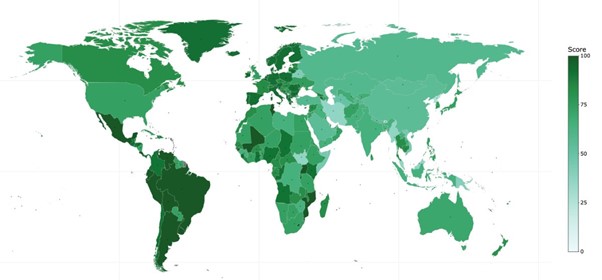Between 22nd – 24th May 2024 members of the MaGPIE team paid a visit to the International Commission on Missing Persons headquarters in The Hague. Melanie has been working successfully with the ICMP, particularly Andreas Kleiser, for a number of years in conjunction with the Missing Persons Indicator Project, a project closely associated with MaGPIE, that seeks to develop comprehensive data on States relationship with missing persons. The purpose of this visit was to update the ICMP on the status of the Missing Persons Indicator Project (MPIP), to introduce MaGPIE, seek expert advice and to elucidate linkages between the two projects.
 The MPIP student researcher team has recently spent two weeks working through Structural Indicators ranging from ratification of international treaties to in-State missing persons organisations – data that can then be exported into layered visualisations for use in various diplomatic exercises. It is vital to show the gaps and connections between law, institutions and the resolution of missing persons cases. Such example visualisations were presented to the ICMP, one of which is displayed below:
The MPIP student researcher team has recently spent two weeks working through Structural Indicators ranging from ratification of international treaties to in-State missing persons organisations – data that can then be exported into layered visualisations for use in various diplomatic exercises. It is vital to show the gaps and connections between law, institutions and the resolution of missing persons cases. Such example visualisations were presented to the ICMP, one of which is displayed below:

This image evidences a ‘score rating’ of Structural Indicator 1, data collated in relation to ratification of relevant UN treaties relating to missing persons. Ratification is evaluated on a point scale, with each treaty assessed relative to others for visualisation purposes. Current findings are due to feature in the next iteration of the ICMP Global Report thus building on the 2021 publication. In that first issue the idea of missing persons indicators was scoped. Attendees provided feedback, requesting the ability to qualitatively query relationships between data points and they also inquired about layering maps of indicators to create a more comprehensive narrative.
The discussion was particularly insightful for MaGPIE workpackage 1.2, which compiles mass grave indicator data similarly – collating data qualitatively to compliment the quantitative mass grave map, showcasing the degree of mass grave legislative protection and oversight within States. Suggestions from this meeting can be implemented to make the data collated in MaGPIE 1.2 more practical and useful for international organisations.
The meeting also served to underscore and cement the ongoing collaboration between the ICMP and Bournemouth University. ICMP will be providing a supervisory input for three MaGPIE PhDs (Cultural and Indigenous Rights; Data Protection; Participatory Rights), and the students will also have the opportunity to spend time at the ICMP as part of their research. This will enable students to connect their aims and objectives with practical implementation, and gain ‘real-world’ experience to give tangible application and validity to their work. Due to the ICMP’s ongoing engagement in Canada, for example, Indigenous rights are recognised as a vital to the engagement with mass graves, including in relation to collective rights and human rights.
As the MaGPIE team will turn its attention to policy development, including a Protocol on Mass Graves as a Result of Migration and Trafficking, Protocol on Mass Graves at Sea, and a Revision of the Bournemouth Protocol, further opportunity will arise to seek input from members of the ICMP in those areas.
Finally, Lucy Johnson, head of ICMP DNA lab, showed the team around the laboratory, which is the world’s largest missing persons DNA testing program, explaining use of different equipment and technologies. Each DNA match is overseen by two DNA scientists and if a consensus cannot be reached then a third scientist is bought in to give a deciding opinion. It was fascinating to get an insight into this vital side of ICMP operations.
Overall, the presentations and discussions highlighted the dynamic and evolving nature of both the Missing Persons Indicator Project and MaGPIE. Continuous updates, technological integration, and sensitive handling of cultural contexts remain crucial for all aspects of the research.
Emily Fisher







